Japanese Broth

Can you explain the concept of umami in Japanese cooking ?
Umami is one of the five basic tastes, along with sweet, sour, salty, and bitter. It is often described as a savory or meaty taste, and is commonly found in foods such as mushrooms, soy sauce, and aged cheeses. In Japanese cooking, umami is considered an essential flavor profile that adds depth and complexity to dishes. The science of umami is caused by the presence of glutamate, a type of amino acid, in food. When we eat foods that contain glutamate, it stimulates our taste buds and sends signals to our brain that register as a distinct taste. This taste is often associated with protein-rich foods like meat, fish, and vegetables. In Japanese cuisine, umami is used to enhance the flavors of dishes and create a more complex taste profile. Some common ingredients that are high in umami include miso (fermented soybean paste), dashi (Japanese broth made from dried fish and seaweed), soy sauce, dried shiitake mushrooms, and kombu (a type of seaweed). Umami is used in a variety of ways in Japanese cooking. For example, miso soup is made by mixing miso paste with dashi broth to create a savory soup that is often served as part of a traditional Japanese breakfast. Sushi combines vinegared rice, fresh fish, and soy sauce to create a perfect balance of flavors that includes umami. Ramen noodles use a broth made with chicken or pork bones, which are rich in umami. Teppanyaki involves grilling meat and vegetables on a hot plate, which helps to release their natural umami flavors. In conclusion, umami is an important flavor profile in Japanese cooking that adds depth and complexity to dishes. By using ingredients that are high in glutamate, chefs can create dishes that are both delicious and satisfying.

What is the difference between ramen and udon noodles ?
Ramen and udon are two popular Japanese noodle dishes with unique flavors, textures, and cultural significance. Ramen is made from wheat flour, water, salt, and kansui, resulting in elastic and chewy noodles. It is typically served in a meat-based broth flavored with soy sauce, miso, or seafood, and topped with pork, menma, scallions, nori, and a soft-boiled egg. Udon, on the other hand, is made primarily from wheat flour and water, producing thicker and smoother noodles. Its broth is usually clear and light, made from kombu and shiitake mushrooms, and often served hot or cold with simple toppings like tempura, green onions, or grated ginger. Ramen originated in China but became popular in Japan during the early 20th century, evolving into a staple of Japanese cuisine. It has numerous regional variations across Japan, such as Sapporo's miso ramen, Hakata's tonkotsu ramen, and Tokyo's soy sauce-based ramen. Ramen shops can be found everywhere in Japan, from high-end establishments to quick street food stalls, reflecting its deep integration into daily life. Udon has been part of Japanese cuisine for centuries and is traditionally associated with Sanuki (now Kagawa Prefecture), known as the "Udon Kingdom." While udon is typically served in a simple broth or chilled with a dipping sauce, there are also hot pot variations like nabe and kitsune (fox) udon. Udon is often considered comfort food in Japan and is frequently consumed during cold weather or as a quick meal due to its ease of preparation. In conclusion, ramen and udon offer distinct experiences for those who enjoy them. Ramen provides a hearty and filling meal with complex broths and diverse toppings, while udon offers a cleaner taste with simpler broths and toppings, focusing on the pure enjoyment of the noodle itself. Both have their place in Japanese cuisine and continue to captivate noodle enthusiasts around the world.
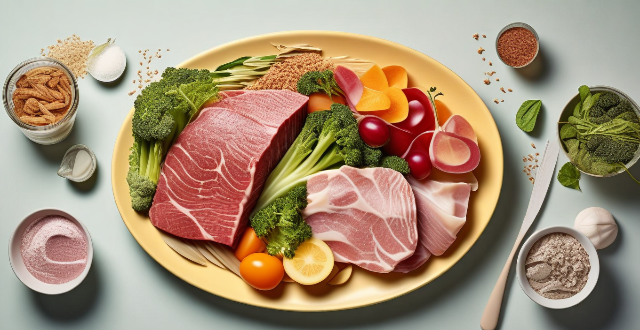
What are some healthy options for Japanese breakfast ?
Japanese breakfast offers a variety of healthy options that provide essential nutrients and flavors. Miso soup is rich in protein and probiotics, aiding digestion and immunity. Tamagoyaki offers high-quality protein in a low-calorie package. Natto is fermented soybeans with vitamins, minerals, and probiotics for gut health. Onigiri are portable rice balls filled with various ingredients for carbohydrates and protein. Grilled fish provides omega-3 fatty acids for heart and brain health. Japanese pickles are low-calorie, fiber-rich vegetables aiding digestion. Yudofu is boiled tofu high in protein and calcium, suitable for vegans or those watching their weight. Okara, the soy milk residue, is high in fiber and protein, promoting fullness and digestive health. Incorporating these dishes into your breakfast routine can offer a balanced and nutritious start to the day while enjoying Japanese flavors.
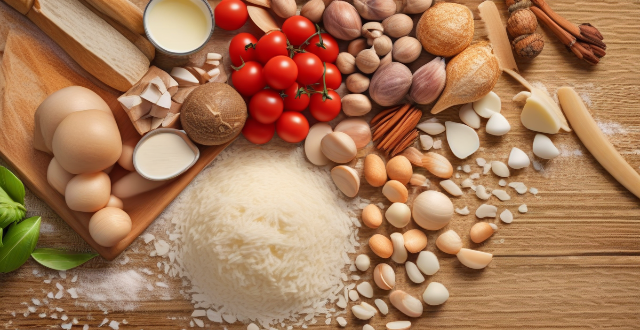
What kind of ingredients are commonly used in Japanese cuisine ?
Japanese cuisine is known for its unique flavors, fresh ingredients, and beautiful presentation. The most commonly used ingredients in Japanese cooking include white rice, brown rice, sweet rice, tuna, salmon, squid, shellfish, chicken, beef, pork, cabbage, eggplant, green onions, mushrooms, soy sauce, miso, udon noodles, soba noodles, ramen noodles, rice vinegar, sesame oil, nori, wasabi, and pickled ginger. These ingredients combine to create the diverse and delicious flavors that make Japanese cuisine so beloved around the world.

What are some popular Japanese dishes ?
Japanese cuisine is known for its exquisite flavors, meticulous preparation, and beautiful presentation. Some popular dishes include sushi, ramen, tempura, udon, and okonomiyaki. Sushi comes in various forms such as nigiri, sashimi, and maki. Ramen is a noodle soup with different broths and toppings. Tempura is a fried dish with a light batter. Udon is thick noodles served hot or cold with various toppings. Okonomiyaki is a savory pancake with diverse ingredients. Each region in Japan has its own specialties and unique flavors to explore.

What is the best way to cook tempura batter ?
Tempura is a Japanese dish that originated in the late 16th century. It consists of seafood, vegetables, or other ingredients dipped in a wheat-flour batter and deep-fried. The key to perfect tempura lies in the preparation of the batter. Here are some tips on how to make the best tempura batter: Ingredients: - Vidalia Onions - These sweet onions are low in sulfuric compounds, which makes them easier to digest. They also have a lower fiber content than yellow or white onions, making them less likely to cause gas or bloating. - Garlic - Garlic is rich in antioxidants and has anti-inflammatory properties. It's also known for its immune-boosting benefits. - Ginger - Ginger has been used for centuries as a natural remedy for digestive issues. It can help relieve nausea and vomiting, reduce gas and bloating, and even alleviate symptoms of acid reflux. - Chicken Broth - Chicken broth is an excellent source of minerals like calcium, magnesium, and potassium. It also contains collagen, which is great for gut health. - Bone Broth - Bone broth is rich in amino acids like glycine and proline, which can help repair the gut lining and reduce inflammation. - Coconut Oil - Coconut oil contains medium-chain triglycerides (MCTs), which are easily digested and can provide quick energy for the body. It also has antimicrobial properties that can help support gut health. Preparation: 1. Chop your chosen vegetables into small pieces. This will ensure that they cook evenly and absorb the flavors of the broth. 2. In a large pot, heat up some coconut oil over medium heat. Add the chopped onions, garlic, and ginger, and sauté until they become fragrant and slightly softened. 3. Pour in the chicken broth and bone broth, then bring everything to a boil. 4. Once the broth is boiling, add in your chopped vegetables. Stir everything together so that the vegetables are fully submerged in the liquid. 5. Add salt, pepper, and any other desired seasonings to taste. Consider adding herbs like thyme or rosemary for additional flavor. 6. Reduce the heat to low and let the soup simmer for at least 30 minutes, or until the vegetables are tender and fully cooked through. 7. Ladle the hot soup into bowls and serve immediately. Enjoy the warmth and comfort of this delicious and gut-friendly vegetable soup!

How can I prepare a quick and tasty soup ?
In this text, the author provides a simple and quick recipe for preparing a tasty soup at home. They detail the ingredients needed, including olive oil, onion, garlic, carrots, celery, zucchini, vegetable broth, white beans, spinach, salt, pepper, and fresh herbs for garnish. The instructions are broken down into six steps: sautéing the vegetables, adding broth and beans, simmering, adding spinach, seasoning, and garnishing before serving. The author also offers tips for variations, adding protein, and spicing up the soup. Overall, the text emphasizes the versatility and nutritional value of soups while providing a straightforward recipe for a delicious homemade option.

How do I make a Japanese-style bento box ?
Bento boxes are a traditional Japanese meal that is packed in a box and typically consists of rice, fish or meat, and vegetables. Here's how you can make your own Japanese-style bento box: Ingredients: - 1 cup of cooked white rice - 1/2 pound of thinly sliced beef or chicken - 1 tablespoon of soy sauce - 1 tablespoon of sugar - 1 tablespoon of mirin (Japanese sweet cooking wine) - 1 teaspoon of sesame oil - 1/4 cup of sliced carrots - 1/4 cup of sliced bell peppers - 1/4 cup of sliced cucumbers - 1/4 cup of sliced cherry tomatoes - 1 sheet of nori (dried seaweed) - Salt and pepper to taste Instructions: 1. Marinate the Meat: In a bowl, mix together the soy sauce, sugar, mirin, and sesame oil. Add the sliced beef or chicken and let it marinate for at least 30 minutes. 2. Cook the Rice: Cook the rice according to package instructions until it is soft and fluffy. Set aside to cool slightly. 3. Prepare the Vegetables: Slice the carrots, bell peppers, cucumbers, and cherry tomatoes into thin strips. Season them with salt and pepper. 4. Cook the Meat: Heat a pan over medium heat and cook the marinated meat until it is browned and cooked through. Set aside to cool. 5. Assemble the Bento Box: Take a bento box and fill one compartment with the cooked rice. Arrange the cooked meat and vegetables in separate compartments or on top of the rice. Cut the nori into small pieces and sprinkle them over the rice and vegetables. 6. Enjoy Your Bento Box: Your Japanese-style bento box is now ready to be enjoyed! Eat it as a delicious and healthy meal or pack it for a picnic or lunch on-the-go.

Where can I find a fine dining experience in Tokyo, Japan ?
Tokyo is famous for its diverse culinary scene, offering a wide range of fine dining experiences that cater to various tastes and preferences. Whether you're in the mood for traditional Japanese cuisine or international fare, there are plenty of options to choose from. Here are some of the top places to find a fine dining experience in Tokyo: ## Traditional Japanese Cuisine ### Kohju - **Location**: Ginza district - **Cuisine**: Kaiseki (traditional multi-course meal) - **Highlights**: Elegant atmosphere, seasonal ingredients, skilled chefs - **Price Range**: High-end ### Ishikawa - **Location**: Shibuya district - **Cuisine**: Sushi (raw fish served with vinegared rice) - **Highlights**: Fresh seafood, expert sushi craftsmanship, intimate setting - **Price Range**: Moderate to high-end ## International Cuisine ### Quintessence - **Location**: Shiodome district - **Cuisine**: French - **Highlights**: Innovative dishes, impeccable service, stunning views of Tokyo Bay - **Price Range**: High-end ### Narisawa - **Location**: Minami Aoyama district - **Cuisine**: Modernist Japanese with international influences - **Highlights**: Creative presentations, locally sourced ingredients, artistic plating - **Price Range**: High-end ## Vegetarian/Vegan Options ### Yohji - **Location**: Harajuku district - **Cuisine**: Vegan Japanese fusion - **Highlights**: Flavorful plant-based dishes, unique flavor combinations, cozy atmosphere - **Price Range**: Moderate ### Sougo - **Location**: Roppongi district - **Cuisine**: Vegan Italian - **Highlights**: Hearty pastas, authentic Italian flavors, friendly staff - **Price Range**: Moderate to high-end ## Budget-Friendly Options ### Ichiran Ramen - **Location**: Multiple locations throughout Tokyo - **Cuisine**: Ramen (noodle soup) - **Highlights**: Customizable broth and toppings, fast service, affordable prices - **Price Range**: Affordable ### Tenya - **Location**: Multiple locations throughout Tokyo - **Cuisine**: Tendon (tempura over rice) - **Highlights**: Crispy tempura, generous portions, quick meals on the go - **Price Range**: Affordable No matter your budget or dietary preferences, Tokyo offers a diverse array of fine dining experiences that will leave you satisfied and eager to return for more.

Can you recommend a good Japanese restaurant in my area ?
The text provides recommendations for finding a good Japanese restaurant in one's area. It suggests checking online reviews, asking locals for recommendations, looking for specialties, and considering the ambiance. The steps to follow include searching online, making a list of potential restaurants, narrowing down options, calling ahead, and trying them out. The author encourages readers to enjoy their culinary adventure and discover personal favorites.

How do I use chopsticks properly when eating Japanese food ?
Using chopsticks is an art form in Japan, and there are certain etiquette rules that you should follow to show respect for the culture. Here's a step-by-step guide on how to use chopsticks properly when eating Japanese food: 1. Holding the Chopsticks: Hold the first chopstick (the one closer to the tip of the food) like a pencil, resting it between your thumb and index finger. This is your stationary chopstick. Place the second chopstick (the one closer to the end of the food) underneath the first chopstick, resting on your ring finger. This is your moving chopstick. 2. Picking Up Food: Use the tips of the chopsticks to scoop up food rather than pincing it with the ends. This is considered more polite and traditional. For larger pieces of food, it's acceptable to use both chopsticks to pick them up. For smaller items, try using just one chopstick if possible. 3. Eating: If you need to dip your food in soy sauce or another sauce, do so lightly and minimally. Overdoing it can be seen as wasteful. Place the food in your mouth from the chopsticks without making any noise. Chew with your mouth closed. 4. Chopstick Etiquette: Avoid playing with your chopsticks, tapping them on the table, or leaving them standing in your food. These actions are considered impolite. Never use your chopsticks to point at people or gesture with them. This is rude and associated with funeral rites in Japan. Do not lay your chopsticks across your plate or bowl as this resembles incense sticks at a funeral. Instead, rest them on the chopstick rest provided or on the edge of your dish. 5. After Eating: It's common to wipe the ends of the chopsticks before and after use with the small towel or oshibori provided. If you're at a restaurant, leave the chopsticks as they are when you finish eating. Do not put them back in their original packaging or wrap them up. By following these guidelines, you'll not only avoid offending anyone but also show that you respect and appreciate Japanese dining culture. Remember, practice makes perfect!

What are the best travel destinations for foodies ?
The text discusses the best travel destinations for food lovers, including Italy, France, Japan, Thailand, and India. The author provides a brief overview of each country's cuisine, highlighting some popular dishes that are unique to each destination.
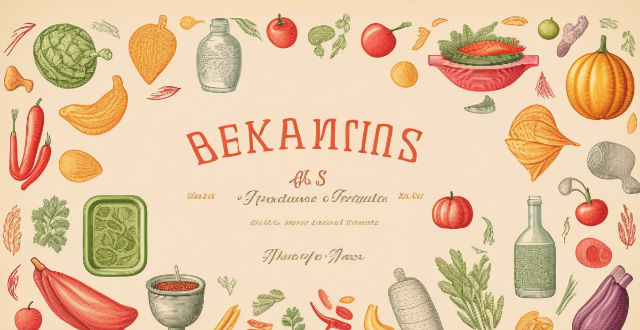
How do people in Japan celebrate the Lunar New Year with food ?
In Japan, the Lunar New Year, known as Oshogatsu, is celebrated through various food traditions that symbolize wishes for the new year. One iconic tradition is osechi ryori, a collection of colorful and symbolic dishes arranged in a lacquer box called an ojubako. These dishes include Kohaku Namasu, Kuromame, Tazuki, Kagamobashi, and Datemaki, each representing different aspects of life such as success, health, luck, connections, and learning. Another important food is mochi, a sweet rice cake believed to bring longevity and happiness. On New Year's Day, many families enjoy ozoni, a warm soup with mochi or soba noodles, vegetables, and sometimes chicken or fish, symbolizing the transition from the old year to the new one. While not as widely celebrated as other holidays, these culinary traditions remain significant for those who observe the Lunar New Year in Japan.

What are some good options for quick and easy vegetarian meals ?
Vegetarian meals can be quick and easy to prepare. Here are some options: stir-fry vegetables with rice or noodles, quinoa salad with roasted vegetables, vegetable soup or broth, veggie burgers with avocado and salsa, and pasta with pesto and cherry tomatoes. These meals can be customized based on preferences and what's available in the kitchen.
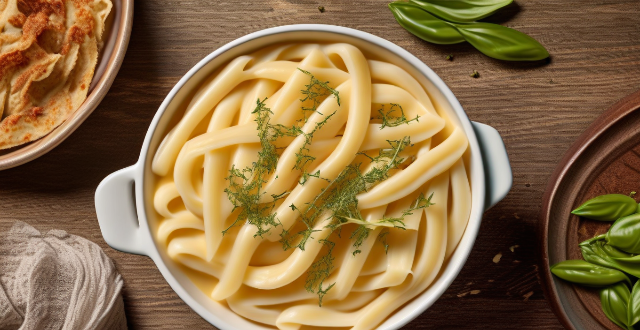
How do I make a creamy pasta sauce without using heavy cream ?
To make a creamy pasta sauce without using heavy cream, start by sautéing aromatics like onions and garlic in olive oil. Then, add vegetable or chicken broth and unsweetened non-dairy milk to the pan. Thicken the mixture with a flour slurry and season it with Dijon mustard, salt, and pepper. Finally, toss the creamy sauce with your cooked pasta for a delicious dairy-free meal.

What are some vegetarian Italian pasta recipes ?
Italian cuisine is known for its delicious pasta dishes, and there are plenty of vegetarian options to choose from. Here are some vegetarian Italian pasta recipes that you can try: 1. Spaghetti with Tomato Sauce 2. Mushroom Stroganoff 3. Pesto Pasta 4. Roasted Vegetable Pasta 5. Creamy Spinach Pasta

Can you recommend any tasty and healthy low-calorie soup recipes for lunch ?
Here is a topic summary for the text: The text recommends three tasty and healthy low-calorie soup recipes for lunch. The first recipe is Tomato Basil Soup, which is low in calories and packed with vitamins and antioxidants. The second recipe is Carrot Ginger Soup, which is healthy and comforting with a sweet and spicy flavor. The third recipe is Broccoli Cheddar Soup, which is a bit higher in calories but still a healthy and delicious option with a rich and flavorful taste. All three recipes are easy to make and can be enjoyed as a satisfying and nutritious lunch option.

What are the most popular vegetarian dinner recipes ?
Vegetarian dinner recipes have become increasingly popular in recent years as people are looking for healthier and more sustainable food options. Here are some of the most popular vegetarian dinner recipes: 1. Lentil Soup: A hearty and filling meal that is perfect for colder months, packed with protein, fiber, and nutrients. 2. Chickpea Curry: A flavorful and satisfying dish that is easy to make, perfect for those who love Indian cuisine. 3. Roasted Vegetable Quinoa Bowl: A healthy and colorful meal that is perfect for meal prep, packed with vegetables, protein, and fiber.

How does Japan manage its immigration with its strict policies ?
Japan's Immigration Management with Strict Policies Japan maintains strict immigration policies to protect its cultural identity and ensure the smooth integration of immigrants into society. These policies include visa requirements, a points-based system for evaluating foreign workers, a residence card system, employment regulations, and language requirements. Foreign nationals must obtain a visa unless exempt, and there are different types of visas depending on the purpose of visit. The points-based system assigns eligibility based on factors like age, education, experience, and language skills. Once in Japan, foreigners must register their residence within 90 days and carry a Residence Card at all times. Employers must comply with laws regarding foreign workers' wages, hours, and safety standards. Language proficiency is often required for work or study visas to facilitate communication and integration into Japanese society. Overall, these measures aim to manage immigration legally and harmoniously while contributing positively to Japan's economy and society.
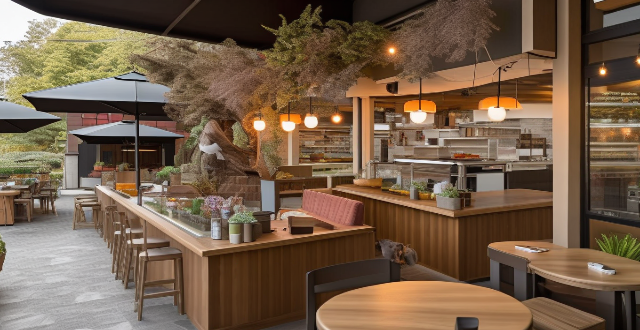
What are some must-try local experience activities in Tokyo ?
Tokyo offers a variety of local experience activities that cater to different interests, including sushi making classes, tea ceremonies, ninja training, kimono experiences, sake tasting, Sumida River cruises, traditional craft workshops, ramen museum and cooking class, robot restaurant show, Harajuku street fashion tour, baseball game at Tokyo Dome, Tsukiji Fish Market tour, Asakusa Temple and traditional shopping street, Kabuki theatre performance, and Odaiba Beach and DiverCity Tokyo Plaza. These activities provide an authentic Tokyo experience and allow visitors to fully appreciate the diverse facets of Tokyo's vibrant lifestyle.

What are some easy and delicious vegetarian recipes for beginners ?
Vegetarianism is a popular dietary choice, but it can be daunting for beginners to find easy and delicious recipes. Here are some simple vegetarian dishes that are perfect for those new to plant-based eating: ## **1\. Roasted Vegetable Pasta** This colorful pasta dish is packed with flavor and nutrition. **Ingredients:** * 1 cup cherry tomatoes, halved * 1 zucchini, sliced * 1 red bell pepper, sliced * 1 yellow onion, chopped * 2 garlic cloves, minced * 8 oz whole wheat pasta * 2 tbsp olive oil * Salt and pepper to taste * Fresh basil leaves for garnish **Instructions:** 1. Preheat oven to 400°F (200°C). 2. Toss the vegetables in olive oil, salt, and pepper. 3. Arrange the vegetables on a baking sheet and roast for 25 minutes or until tender. 4. Cook the pasta according to package instructions. 5. In a large bowl, combine the roasted vegetables and cooked pasta. 6. Garnish with fresh basil leaves and serve warm. ## **2\. Chickpea Curry** This creamy and flavorful curry is perfect for beginners. **Ingredients:** * 1 can chickpeas, drained and rinsed * 1 onion, diced * 2 garlic cloves, minced * 1 tbsp curry powder * 1 tsp ground cumin * 1 tsp ground coriander * 1 tsp turmeric * 1 can coconut milk * Salt to taste **Instructions:** 1. Heat a pan over medium heat and add a tablespoon of oil. 2. Sauté the onion and garlic until soft. 3. Add the spices and cook for another minute. 4. Stir in the chickpeas and coconut milk. 5. Bring to a simmer and cook for 10 minutes or until the sauce thickens. 6. Season with salt and serve hot with rice or naan bread. ## **3\. Lentil Soup** Lentil soup is hearty, nutritious, and easy to make. **Ingredients:** * 1 cup green lentils, rinsed * 1 onion, diced * 2 garlic cloves, minced * 2 carrots, diced * 2 stalks celery, diced * 4 cups vegetable broth * 1 bay leaf * Salt and pepper to taste

Can you suggest popular dishes that showcase genuine Mexican flavors ?
Mexico's vibrant cuisine blends indigenous ingredients and Spanish cooking techniques. Popular dishes include a variety of tacos, enchiladas, chiles rellenos, quesadillas, authentic soups and broths, antojitos (snacks), street food, and beverages like horchata and agua fresca. These dishes showcase genuine Mexican flavors and the country's rich culinary heritage.

How does Chinese cuisine differ from other Asian cuisines ?
Chinese cuisine is one of the most diverse and influential cuisines in the world, with a history that spans thousands of years. While there are many similarities between Chinese cuisine and other Asian cuisines, there are also several key differences that set it apart. These differences include the use of ingredients, cooking techniques, flavor profiles, and regional variations within each cuisine. Chinese cuisine often uses a wider variety of ingredients than other Asian cuisines, including both meat and vegetables. Additionally, Chinese cuisine often incorporates more spices and herbs into its dishes than other Asian cuisines. Another difference is the cooking techniques used. Chinese cuisine often involves stir-frying or steaming foods, while other Asian cuisines may rely more heavily on grilling or baking. Chinese cuisine also tends to use woks for cooking, which allows for high heat and quick cooking times. In terms of flavor profiles, Chinese cuisine has a distinct flavor profile that sets it apart from other Asian cuisines. Chinese cuisine often features bold flavors such as garlic, ginger, soy sauce, and chili peppers. In contrast, Japanese cuisine may have a lighter, more delicate flavor profile that emphasizes umami (savory) flavors. Thai cuisine, on the other hand, may be spicier and more aromatic than Chinese cuisine. Finally, another difference between Chinese cuisine and other Asian cuisines is the regional variations within each cuisine. China has a vast geographic area with many different regions, each with its own unique culinary traditions. Similarly, Japanese cuisine can vary greatly depending on whether it comes from the northern or southern regions of Japan.

Can you suggest any budget-friendly dinner recipes that don't compromise on taste ?
Budget-friendly dinner recipes include spaghetti aglio e olio, vegetable stir fry, chickpea curry, and lentil soup. These dishes are easy to make with simple ingredients and won't break the bank.

What are the best techniques for cooking seafood ?
The article provides a summary of the best techniques for cooking seafood, which include poaching, grilling, steaming, and baking. Poaching is a gentle method of cooking seafood in a flavorful liquid such as water, broth or wine. Grilling is ideal for firm-fleshed fish like salmon or swordfish and adds flavor and texture to seafood. Steaming is a healthy way to cook seafood without adding extra fat and works well for fish fillets or shellfish like clams or mussels. Baking is a dry heat method that works well for thicker cuts of fish like cod or haddock. The article emphasizes the importance of paying attention to timing and temperature to avoid overcooking seafood.